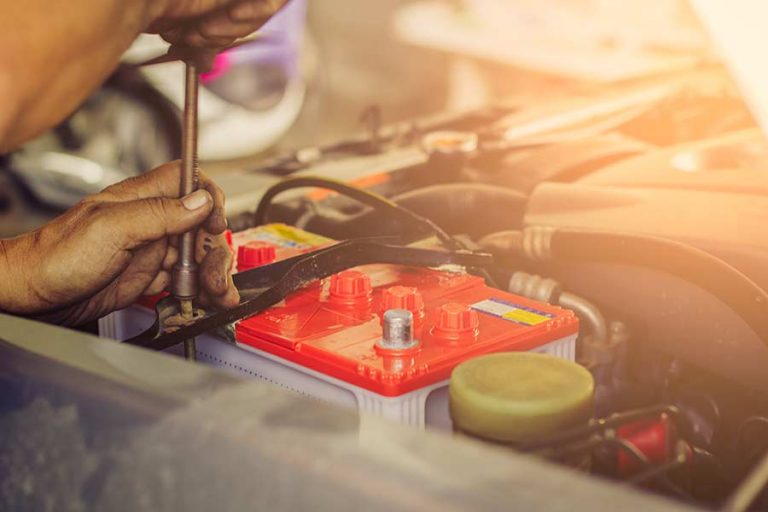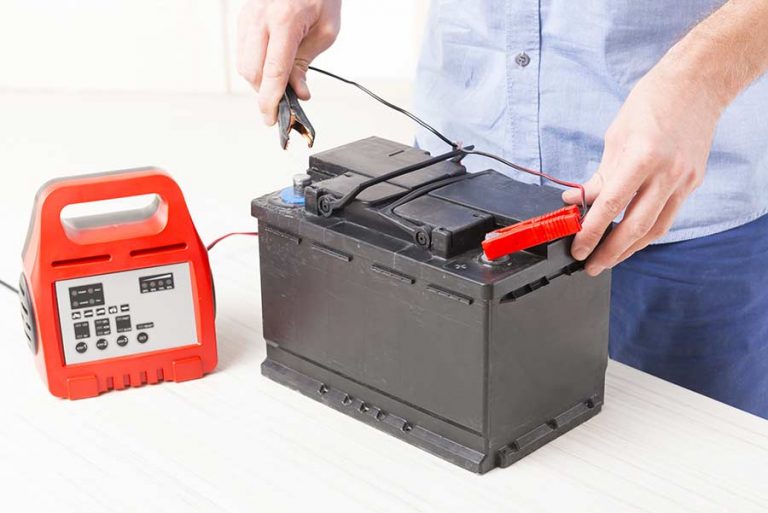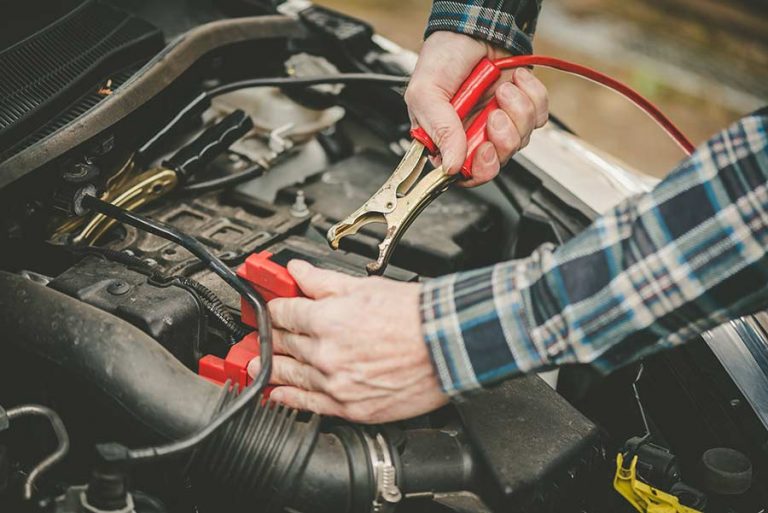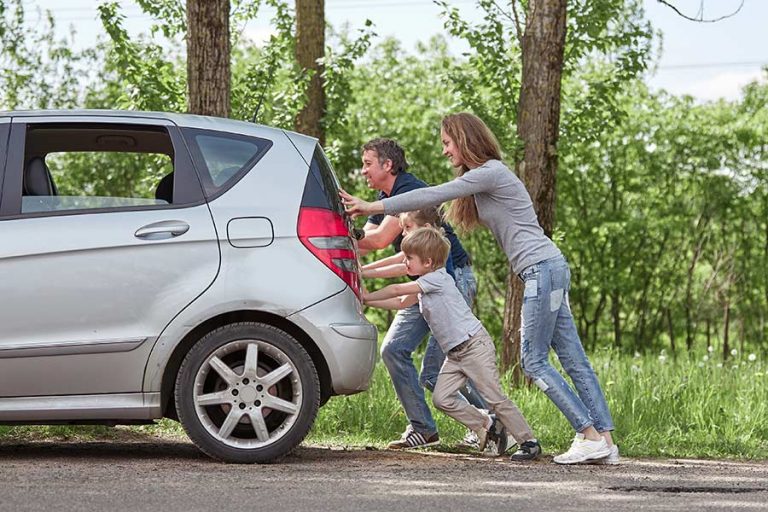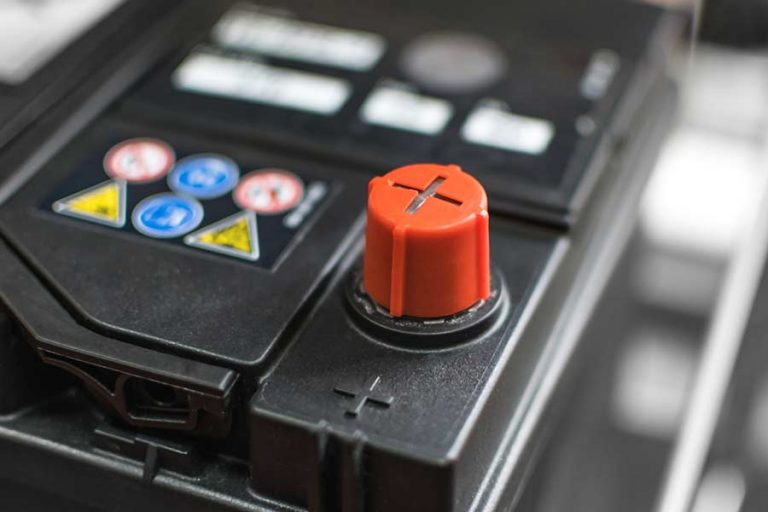How To Jump Start A Car With A Portable Jump Starter
How To Jump Start A Car With A Portable Jump Starter (Quick Guide)
- Switch off your car engine.
- Locate the car battery.
- Remove any caps from the battery terminals.
- Connect the portable jump starter to the car battery via the provided clamps and in the correct order.
- Firstly connect the Red (+) Positive clamp to the Red (+) Positive battery terminal.
- Second, connect the Black (-) Negative clamp to a bare metal area of the car (chasis or bracket). This is to earth it.
- Switch on the portable jump starter and wait for a few minutes for the car battery to absorb some charge.
- Attempt to start the car. If it doesn’t start, wait another 5 minutes and try again.
- Once the car has started, keep the engine running while you switch off the portable jump starter and remove the clamps (negative first and then positive).
You don’t need to be an expert to carry out a jump start, just follow the proven method above and you should get the desired results.
The rest of this guide will take you step by step through the above method in much more detail. I have also researched which methods others use for useful tips and documented the main safety aspects talked about by the experts.
Whenever you work on batteries, there are certain risks involved so I highly recommend that you read the Battery Safety Section below.
Why Should I Buy A Portable Power Pack?
Although there is some initial expense when buying a portable jump starter (also known as a jump pack, jump box, booster cables, or portable power pack), they are a convenient and extremely useful piece of kit to own.
Learning how to jump start a car with a portable jump starter is invaluable, especially if you drive frequently by yourself. It will save you feeling vulnerable in the event of a flat car battery especially in secluded and remote areas.
Other methods used to jump start a flat car battery will require help from others or require the use of a donor car with a fresh battery. When you know how to jump start a car with a portable jump starter, you will not require any assistance, and it can be done quickly and easily.
If you do not currently own a portable jump starter, why not take a look at our Best Portable Power Packs buyers guide. I have reviewed some of the best power packs available as well as the one that I use which can also be found below.
DEWALT DXAE20VBB Battery Booster and 12V Jump Starter
Why Jump Start A Car With A Portable Jump Start?
Portable jump starters are very similar to jumper cables, but if you are using jumper cables, you will also need a healthy car battery as your power source.
A portable jump starter has a battery built into it and is, therefore, the perfect kit to perform an easy jump start. So lets dig into how to jump start a car with a portable jump starter and understand why they are so convenient to own.
Portable jump starters are also known as portable power packs, as they are not only used to jump start car batteries.
Many of the portable power packs that you can buy have USB ports and standard plug outlets so they can be used to charge or run phones, tablets, laptops. Some of the best portable jump starters will have enough power to boil a kettle, which makes them ideal for keeping in your car when you are traveling or campin., although you may need to combine with a power inverter for this.
Another feature you will often find on a portable jump starter is an air compressor.
Two of the most common and easily fixed problems that people experience with their car is the dreaded flat battery and the incredibly annoying flat tire.
The addition of an air compressor to reinflate a flat car tyre solves all of these problems in one convenient little box.
Learning how to jump start a car with a portable jump starter is incredibly easy. If you discover that your car battery is flat, simply connect the cables to your car battery terminals, switch on the power, and start your car. Can it get much simpler?
A portable jump start will also work with both automatic and manual transmissions.
Preparing Your Car For A Jump Start
Understanding how to prepare your car for a jump start will make the process much quicker and safer, so let’s look at what you need to do?
Firstly, if you have broken down where in heavy traffic, you should use a reflective warning triangle to alert other road users that you are there. It would be best if you placed the triangle 50 meters or more behind your car.
Open the hood of your car and locate the battery. You may find that your cars battery is in the trunk or another location. You should read your car owners manual before hand so that you are aware of the battery location.
Make sure the battery is easily accessible. You will need to remove any plastic or rubber terminal covers from both battery terminals if they are present.
Make sure that your portable jump starter is charged and ready to go.
Turn off anything in your car that may draw from the battery, such as the radio, windshield wipers, and headlights.
Car Battery Safety
Before diving in to the jump start process, it is vital to understand the risks involved when working with a car battery so that you can keep yourself safe.

Lead-acid car batteries contain sulfuric acid, which, when exposed to skin, can cause severe burns, and if it comes onto contact with eyes, it can cause blindness.
When a car battery is under charge, it can also give off a gas called hydrogen, and when mixed with air, this can become extremely explosive when also exposed to a spark.
A battery that explodes can cause flying shards of plastic as well as the sulfuric acid contained within the battery, both of which can cause injury.
Although the risks are very low, improper use of jump cables, or a portable jump starter, could cause unnecessary sparking around the battery
It is imperative that when jump starting your battery, you use your power pack correctly as per its instruction manual. It would also be sensible not to stand alongside the battery while charging is taking place.
I would also highly recommend using goggles as an extra precaution when charging a battery.
Remove any jewelry as all metals conduct electricity and can cause sparking and burns.
How To Jump Start A Car With A Portable Jump Starter
The steps above may seem unnecessary but I highly advise you not to neglect them as safety is of paramount importance.
You are now ready to perform the jump start so lets look at the simplest way how to jump start a car with a portable power pack.
Which Battery Terminal Is Positive?
Before you can connect a portable jump starter, you will need to know which battery terminal is positive and which battery terminal is negative.
Take a look at the battery diagram below and you will see that the positive terminal is colored red and has a (+) symbol on the battery casing.
Likewise, the negative terminal is colored blue or black and has a (-) symbol on the battery casing. Sometimes the terminals are not colored, and you will have to rely on locating the (+) and (-) symbols.
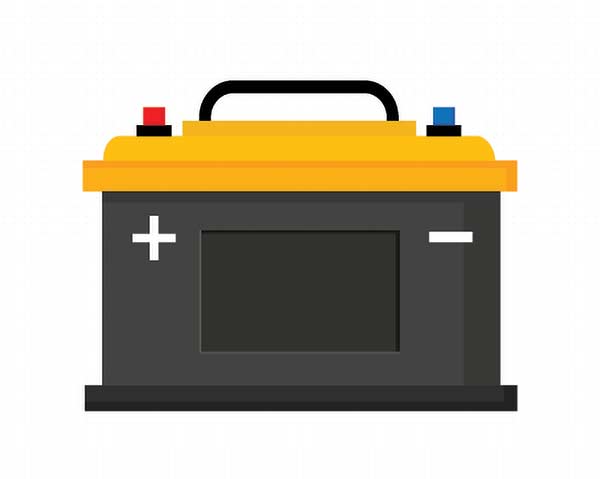
How To Connect A Car Battery To A Portable Jump Starter
It is important to know how to connect a portable jump starter in the correct way to avoid harm to yourself or damage to the car battery, or even the car itself.
A wrongly connected jump pack can cause a fire or battery explosion at the very worst, or damage to the cars electrical system.
The above examples are very worst case scenarios and I have known many people that have connected both jumper cables and jump boxes in the wrong manor with no damage caused but it is always better to lean on the side of caution.
To connect a potable jump starter correctly, you must first read the instructions that came with your portable jump starter or jump box.
It is essential to check that the output of your jump box matches the battery of your car, usually 12 volts. Passing 24 volts into a 12 volt battery could cause it to heat up, catch fire, explode, or could cause damage to it.
The instruction manual that came with your jump starter will explain these specifics.
You should also read the manual for your car as in the very rare event that your car has a positive ground, the instructions for attempting a jump start will be different.
Be aware that some car manufacturers do not recommend jump starts and any damage caused could be void of any warranty.
Make sure that the ignition on your car is off and that your power pack has been switched off.
Your portable jump starter should have two jumper cables. They may be permanently attached, or they may need to be connected first.
Connect the red (positive) cable to the red (positive) terminal on your battery via the crocodile clamp located at the end of the cable.
Now connect the black, negative cable to an exposed, unpainted, metal part of the car body such as a bolt. This is the earth or ground.
The image below demonstrates how the black (negative) is conected to an exposed part of metal or bodywork and away from the red (positive) cable which is connected to the car battery.
Ensure that both jumper leads are firmly attached and will not shake loose when you start your car. As you turn your car over, the engine will shake or judder and could shake the cables loose.
You do not want the two jumper cables to touch. Touching cables may cause sparking and possibly ignite any escaping gasses around the battery. Ther is also many flamable chemicals around an engine bay such as oil and gasoline.
Bring the power pack away from the battery as far as the leads will allow, and switch it on.
Now you can try to start your car by switching on the ignition. If your car does not start at first, you should notice that it has more life in it. Wait for 2 to 3 minutes and try again. You may have to repeat this several times if your battery is extremely flat.
When starting your car, do not let it turn over for more than 3 to 5 seconds. Each attempt at starting your car will drain any charge that your battery has gained. If your car does not start within 3 to 5 seconds, it still needs more charge.
If you feel you need to re-adjust the clamps at any time during this process, always switch off the jump box first.
If your car refuses to start after several attempts and the battery does not seem to be gaining any charge, you may need a new battery.
If you are successful and have managed to start your car, you can switch off your jump start pack.
You will need to remove the cables in the same order as they were put on by first removing the black (negative), and secondly the red (positive).
How Long Should You Run Your Car After A Jump Start?
You have successfully learned how to jump start a car with a portable power pack. One commonly asked question once you have your engine running is, how long should you run your car after a jump start to recharge the battery?
You should understand that you will be relying on the alternator in your car to provide charge to your battery while the engine is running.
The job of the alternator is to provide only a small charge to your battery. This small charge should be enough to keep your battery topped up to a full charge.
The alternator is not designed to, and should not be used to fully charge a flat car battery.
Charging a flat car battery back to full health by running your car could take around 5 hours. The best way to charge a car battery would be to get your car home and use a dedicated car battery charger or trickle charger.
By charging your car battery in this way, you will reduce the strain put on your alternator and help to save it from premature burnout.
Read our How To Change A Car Battery guide, and our How To Charge A Car Battery At Home guide. You will learn everything that you need to know about charging your car battery at home.
Can You Jump A Car In The Rain
Hopefully this guide has made it simple for you to learn how to use a portable power pack to jump start your car. One of the most common questions that I hear is, can you jump a car in the rain?
It would be common sense to ask this question as water and electricity never mix well and may risk electrical shock or excessive sparking.
However, jump starting a car in the rain is no more dangerous than jump starting it in dry weather. So long as you connect and remove the jump cables in the correct order and only touch the cables when the portable jump starter is switched off, the rain should not be an issue.
You should check that the portable jump starter has some form of weatherproofing, such as a plastic or rubber casing, and check the instruction manual.
If your jump box does not have weatherproofing. you would need to make sure that you do not expose it directly to the rain. Using a jacket or plastic bag to cover the jump box should be sufficient and prevent it from getting damaged.




